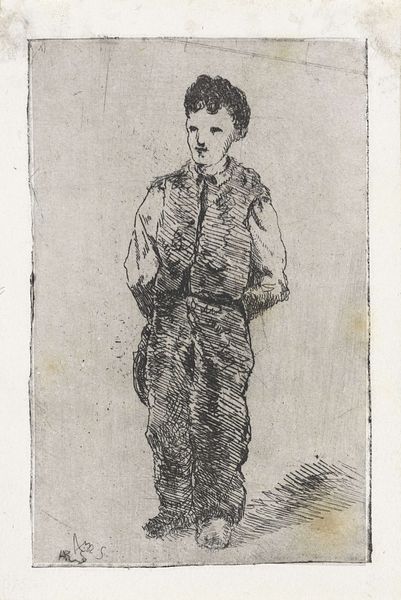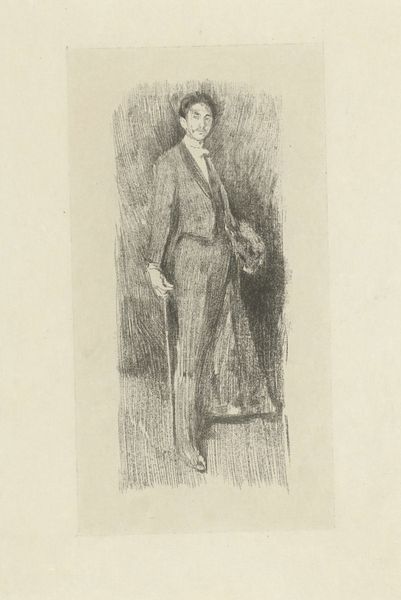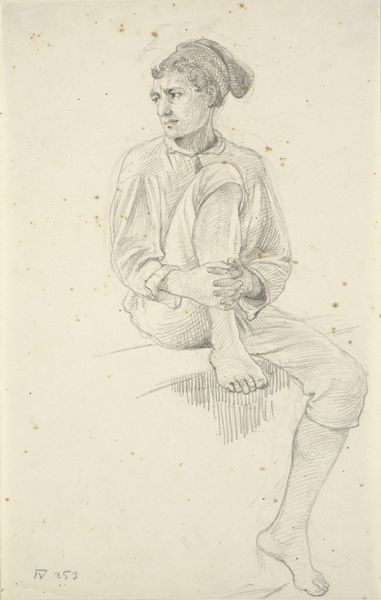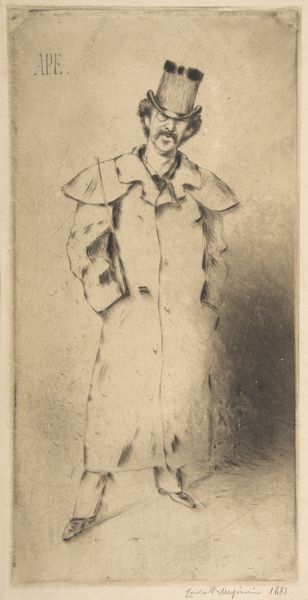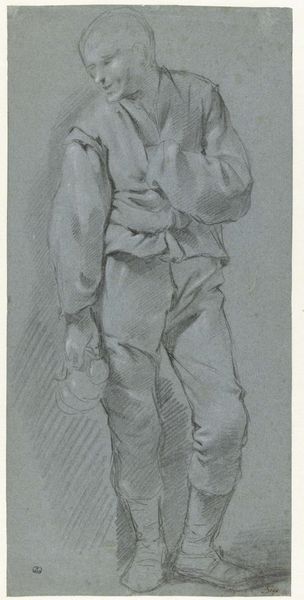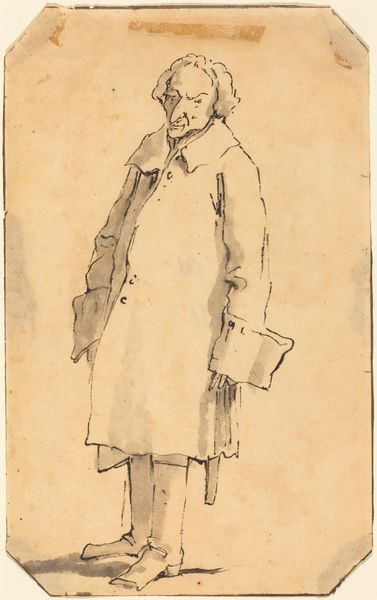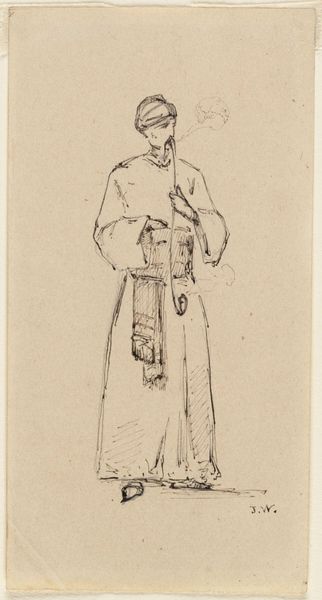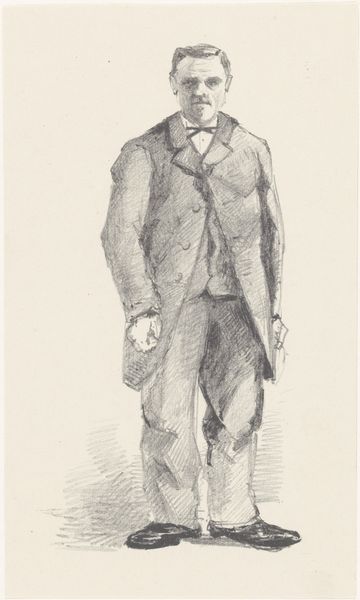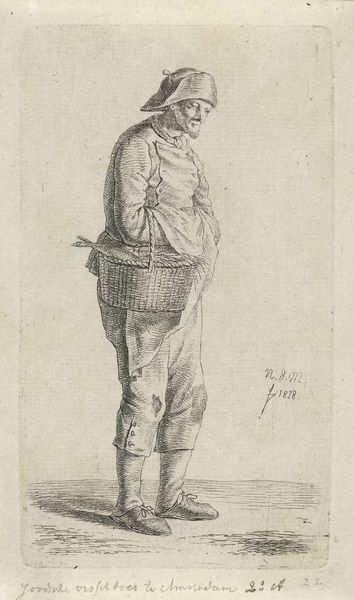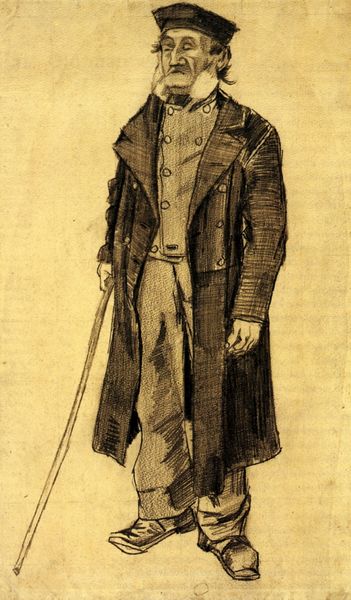
print, engraving
#
portrait
# print
#
old engraving style
#
figuration
#
engraving
#
realism
Dimensions: height 141 mm, width 91 mm
Copyright: Rijks Museum: Open Domain
Curator: This engraving by Arnoud Schaepkens, dating sometime between 1831 and 1904, presents us with a “Jonge man in een overall,” or, “Young Man in Overalls.” The print’s small scale feels intimate, doesn’t it? Editor: It does. What strikes me first is how self-contained the figure seems. The averted gaze and hands clasped behind him suggest perhaps an internalized life or perhaps restricted agency due to external material and social conditions. Curator: Indeed. Thinking about that attire, the overalls indicate a life of labor, doesn’t it? This was likely a young worker, the garment signifying both belonging to a working class and perhaps lacking in personal autonomy or choice. Editor: Yes, it’s about utility, isn't it? The clothing offers very little adornment. And considering it’s an engraving, it brings up an interesting relationship between artmaking and industrial processes. What was the artist trying to convey about labor by creating this piece with a reproducible method of printmaking? Curator: Perhaps there is an interesting parallel to consider; Schaepkens here is working, manually engraving lines that form the young man's overalls and vestments—this is labor too, to reproduce an image, bringing into focus issues of artisanship versus the rise of industrial reproduction, and maybe even alluding to class identity in the production of imagery itself. Editor: Precisely! And this technique reinforces an existing set of iconographic assumptions. We have become used to this style in prints, it conjures memories of historical illustrations and official depictions of subjects across social strata. Does the fact that he chose a printing method make this figure appear as ‘timeless’, a universal portrait across many historical periods? Curator: Good point. Because the overalls and garments depict physical work through material means and are etched through similar labor, while your argument speaks to a continuity of symbols which lends authority… they come together to suggest the timelessness of certain class dynamics. Editor: I find myself returning to the young man’s posture. His youth combined with the uniform implies the conditioning and transmission of values of labor. Curator: For me, understanding the layers of manual processes helps connect with and maybe even subvert that sense of resignation. It is as though each manually engraved line carries meaning and agency even as he’s represented in his garment of labor, asking us to consider the social forces at play in shaping lives but without losing sight of this individual. Editor: Absolutely, this artwork offers such rich commentary and demonstrates the value of looking beyond the surface into both symbolism and the means by which that image was constructed.
Comments
No comments
Be the first to comment and join the conversation on the ultimate creative platform.
